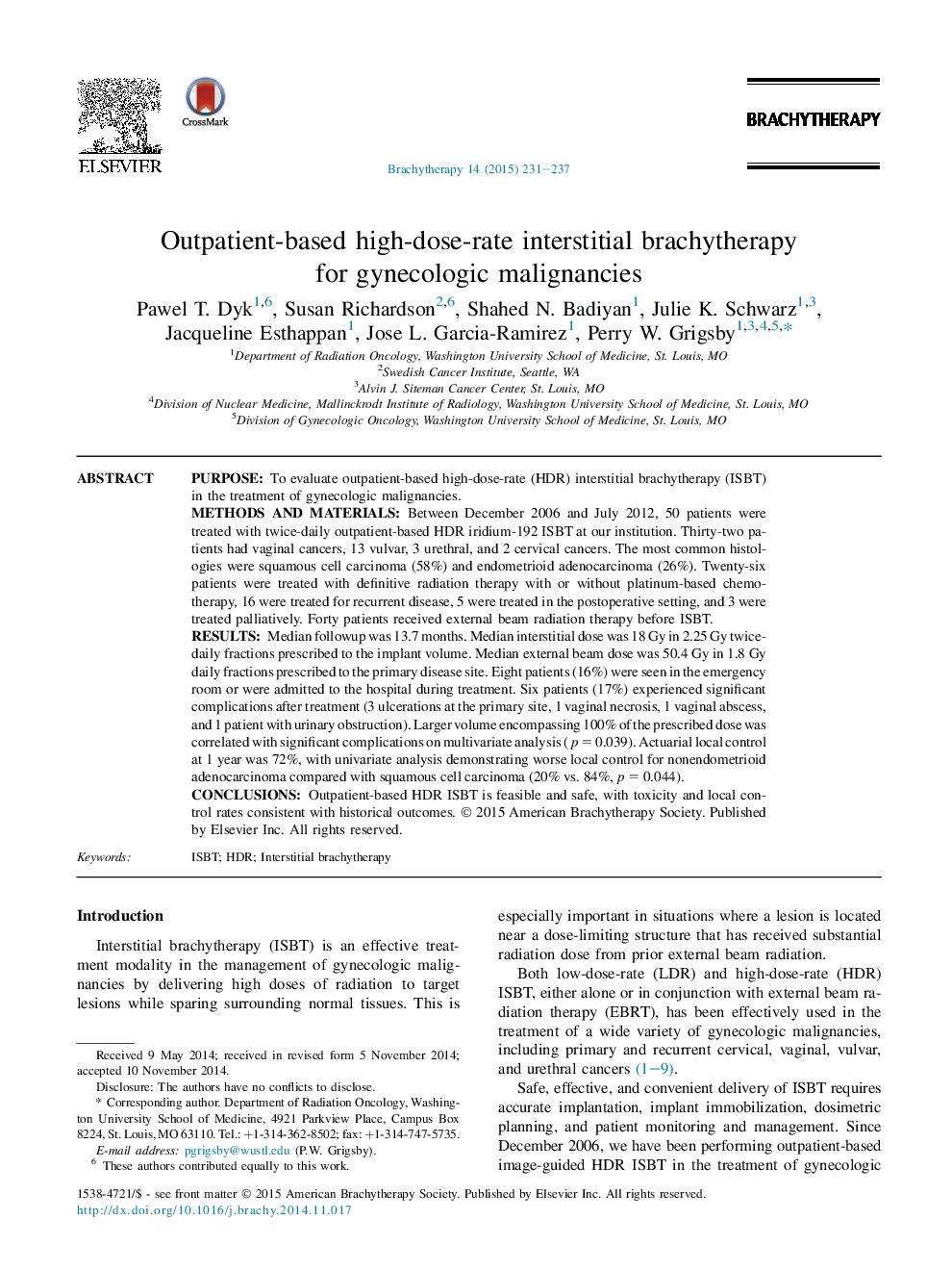| Article ID | Journal | Published Year | Pages | File Type |
|---|---|---|---|---|
| 3976683 | Brachytherapy | 2015 | 7 Pages |
PurposeTo evaluate outpatient-based high-dose-rate (HDR) interstitial brachytherapy (ISBT) in the treatment of gynecologic malignancies.Methods and MaterialsBetween December 2006 and July 2012, 50 patients were treated with twice-daily outpatient-based HDR iridium-192 ISBT at our institution. Thirty-two patients had vaginal cancers, 13 vulvar, 3 urethral, and 2 cervical cancers. The most common histologies were squamous cell carcinoma (58%) and endometrioid adenocarcinoma (26%). Twenty-six patients were treated with definitive radiation therapy with or without platinum-based chemotherapy, 16 were treated for recurrent disease, 5 were treated in the postoperative setting, and 3 were treated palliatively. Forty patients received external beam radiation therapy before ISBT.ResultsMedian followup was 13.7 months. Median interstitial dose was 18 Gy in 2.25 Gy twice-daily fractions prescribed to the implant volume. Median external beam dose was 50.4 Gy in 1.8 Gy daily fractions prescribed to the primary disease site. Eight patients (16%) were seen in the emergency room or were admitted to the hospital during treatment. Six patients (17%) experienced significant complications after treatment (3 ulcerations at the primary site, 1 vaginal necrosis, 1 vaginal abscess, and 1 patient with urinary obstruction). Larger volume encompassing 100% of the prescribed dose was correlated with significant complications on multivariate analysis (p = 0.039). Actuarial local control at 1 year was 72%, with univariate analysis demonstrating worse local control for nonendometrioid adenocarcinoma compared with squamous cell carcinoma (20% vs. 84%, p = 0.044).ConclusionsOutpatient-based HDR ISBT is feasible and safe, with toxicity and local control rates consistent with historical outcomes.
